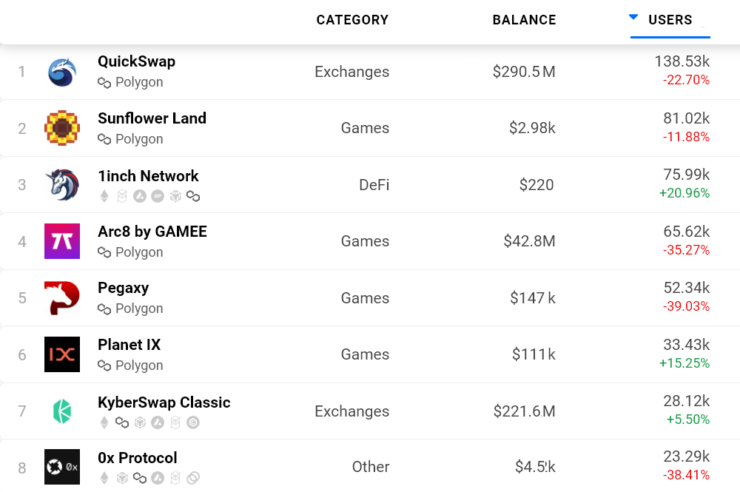Polygon (MATIC) had a promising July, gaining an impressive 83% in 30 days. The smart contract platform uses layer-2 scaling and aims to become an essential Web3 infrastructure solution. However, investors question whether the recovery is sustainable, considering lackluster deposits and active addresses data.


According to Cointelegraph, Polygon rallied after being selected for the Walt Disney Company’s accelerator program to build augmented reality, nonfungible token (NFT) and artificial intelligence solutions.
Polygon announced on July 20 plans to implement a zero-knowledge Ethereum Virtual Machine (zkEVM), which bundles multiple transactions before relaying them to the Ethereum (ETH) blockchain. In a recent interview with Cointelegraph, Polygon co-founder Mihailo Bjelic stated this solution would slash Ethereum fees by 90% and boost throughput to 40–50 transactions per second.
Another reason for Polygon’s rally was the growing number of platforms that started to offer liquid staking for MATIC tokens, which enabled holders to earn additional rewards. Examples include Lido Finance, Balancer, Meshswap and Ankr Staking, according to DeFi Pulse.
Despite currently being 69% below its -time high, Polygon remains a top-12 token by capitalization rank. Moreover, the network holds $1.72 billion worth of deposits locked on smart contracts, known in the industry as total value locked, or TVL.
Polygon’s Ethereum-compatible scaling is fully functional, hosting decentralized applications (DApps) that vary from decentralized exchanges (DEXs), collateralized loan services, yield aggregators, NFT marketplaces and games.
Polygon smart contracts deposits dropped 42%
Despite Polygon’s 83% rally in 30 days, the network’s TVL measured in MATIC tokens dropped by 42% in the same period. As a comparison, Fantom (FTM) scaling solution declined by 14% in 30 days and Klaytn (KLAY) increased by 11%.


In dollar terms, Polygon’s current TVL of $1.42 billion is 67% lower year-to-date. Still, such a number is not distant from Solana’s (SOL) $2.08 billion, or Avalanche’s (AVAX) $2.52 billion, according to DeFi Llama data.
To confirm whether Polygon’s TVL decline is caused by fading adoption, one should analyze DApp usage metrics. Nevertheless, some DApps, such as games and NFT marketplaces, do not require large deposits, so the TVL metric is irrelevant in those cases.


As shown by DappRadar, on August 1, on average, the number of Polygon network addresses interacting with decentralized applications decreased by 19% versus the previous month.
Considering Polygon’s TVL has declined by 42%, the network lacks a more substantial user base growth to support further MATIC token price momentum. Still, Quickswap, the leading DApp, presented 138,530 active addresses over the past 30 days. As a comparison, the leading Ethereum application OpenSea held 299,910 users in the same period.
The above data suggest that Polygon has lost some of its traction in the market for scaling solutions. However, the project’s recently announced zero-knowledge is yet to be implemented, but its benefits could drive MATIC above $1.
The views and opinions expressed here are solely those of the author and do not necessarily reflect the views of Cointelegraph. Every investment and trading move involves risk. You should conduct your own research when making a decision.






















Comments (No)